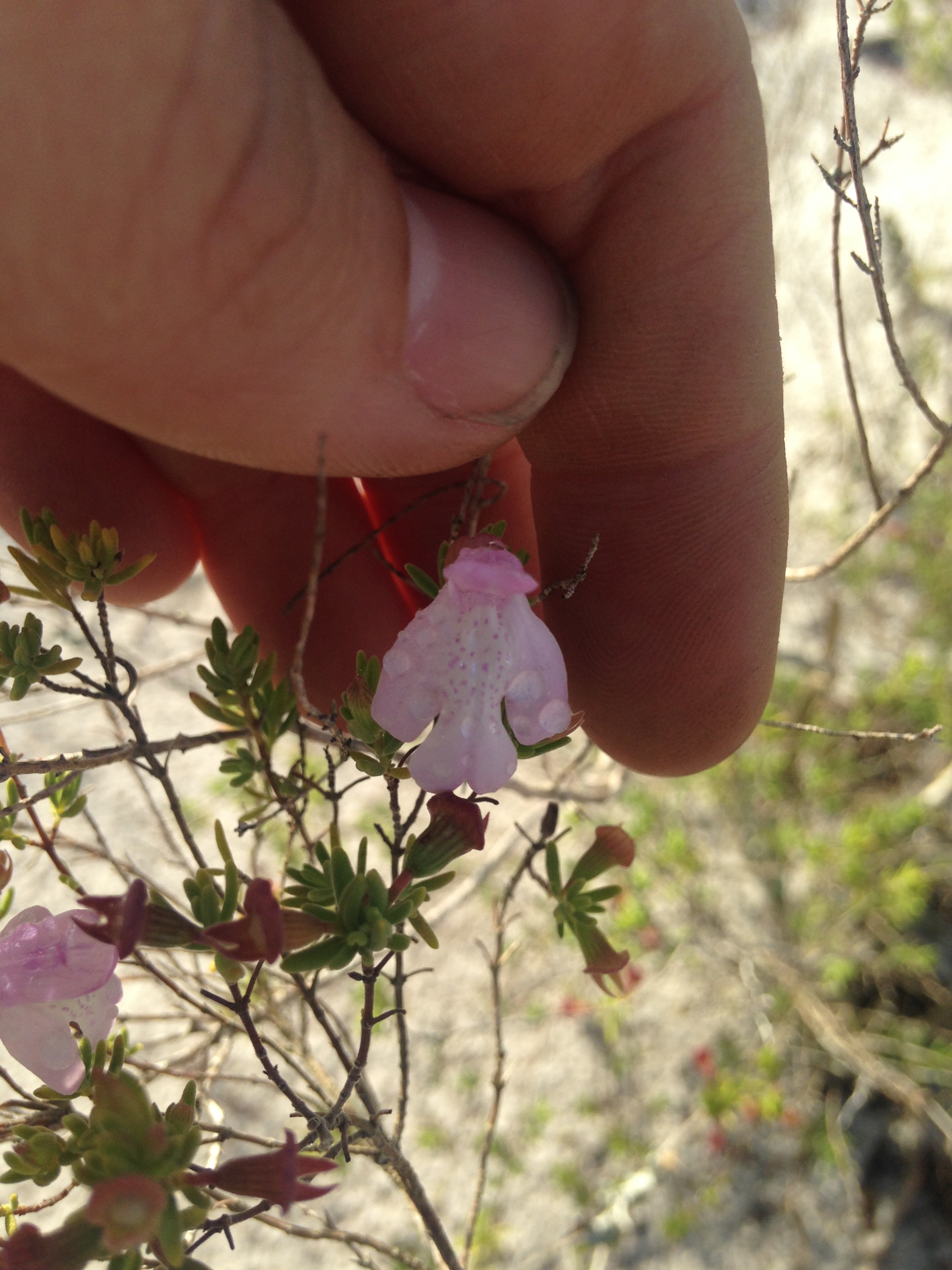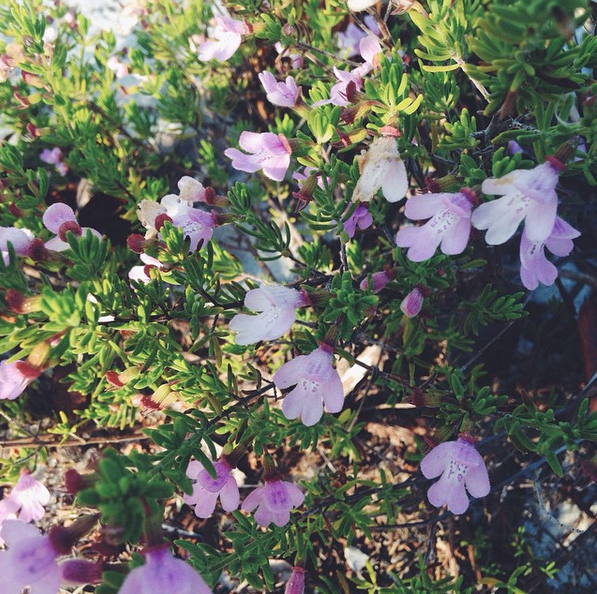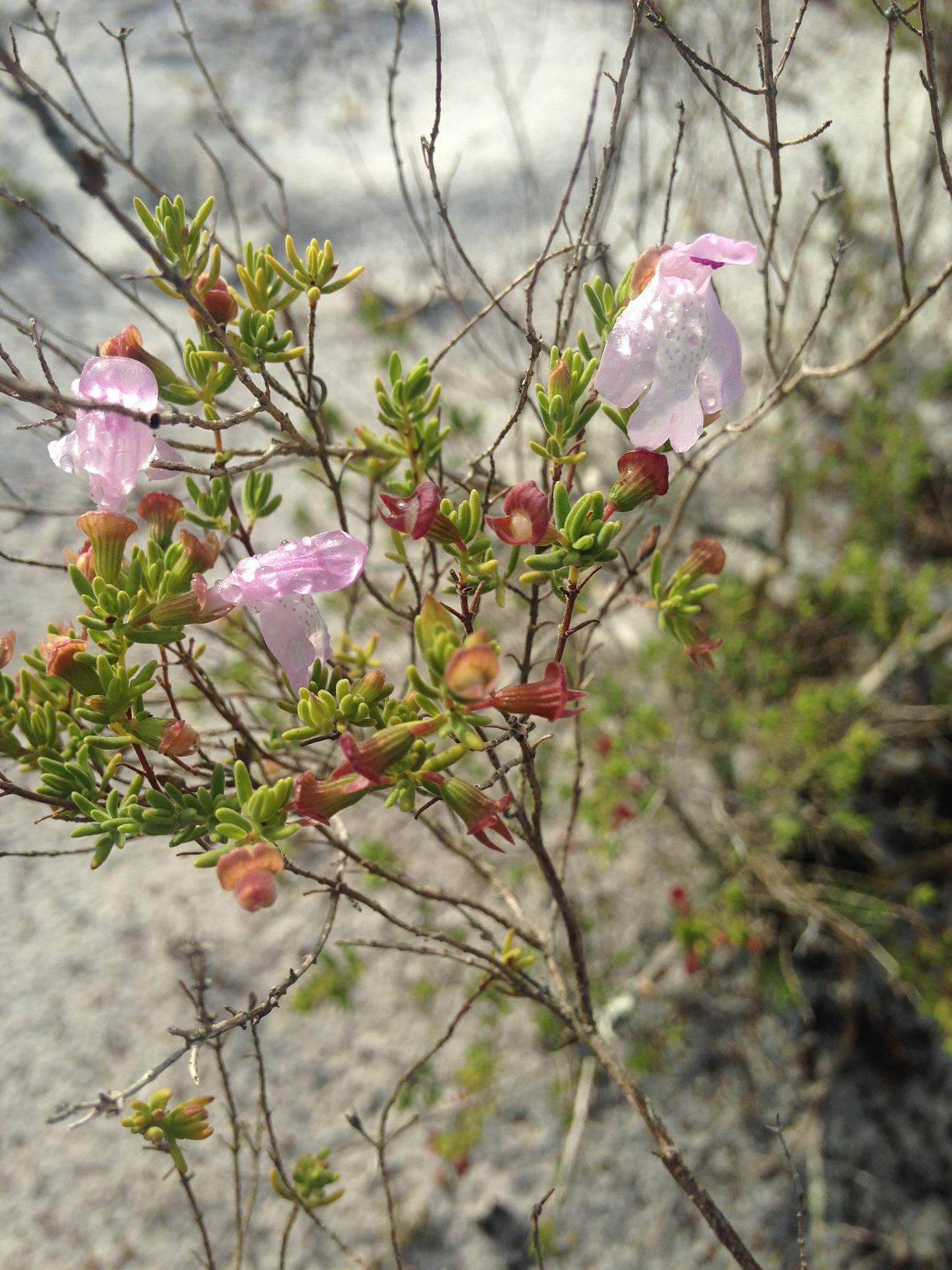Difference between revisions of "Clinopodium ashei"
m (→Conservation, cultivation, and restoration) |
|||
| Line 53: | Line 53: | ||
==Conservation, cultivation, and restoration== | ==Conservation, cultivation, and restoration== | ||
Controlled burning is important for management of ''C. ashei''. It is also important to open the canopy and expose bare sand using methods such as clear cutting and root raking.<ref name="Natureserve"/> | Controlled burning is important for management of ''C. ashei''. It is also important to open the canopy and expose bare sand using methods such as clear cutting and root raking.<ref name="Natureserve"/> | ||
| + | |||
Global rank: G3 | Global rank: G3 | ||
Revision as of 12:39, 8 June 2021
| Clinopodium ashei | |
|---|---|

| |
| Scientific classification | |
| Kingdom: | Plantae |
| Division: | Magnoliophyta - Flowering plants |
| Class: | Magnoliopsida - Dicotyledons |
| Order: | Lamiales |
| Family: | Lamiaceae ⁄ Labiatae |
| Genus: | Clinopodium |
| Species: | C. ashei |
| Binomial name | |
| Clinopodium ashei (Weath.) Shinners | |

| |
| Natural range of Clinopodium ashei from USDA NRCS Plants Database. | |
Common names: Ashe's calamint; Ashe's savory; Ohoopee Dunes wild basil
Contents
Taxonomic notes
Synonyms: Calamintha ashei (Weatherby) Shinners; Satureja ashei Weatherby.[1]
Varieties: none.[1]
Description
C. ashei is a perennial, aromatic shrub with linear leaves arranged in opposite clusters.[2] [3] The bisexual flowers are pinkish-purple.[3][4]
Distribution
Ecology
Habitat
C. ashei is endemic to the Florida central highlands and southeastern Georgia, it occurs in pine-oak scrub ridges, and in Ceratiola scrubs.[3][5] It thrives in open areas of pine scrubs and disturbed sites such as abandoned fields, roadsides, and fire lanes.[3][6] Associated species include Osmanthus megacarpus, Ilex cumulicola and, Ceratiola ericoides.[5]
In order to reduce competition, C. ashei releases allelopathic compounds that prevent germination of other species' seeds, creating un-vegetated patches of sand.[7]
Phenology
Flowers and fruits have been observed January through June.[5]
Fire ecology
Fire has been observed to kill all adult C. ashei individuals.[8] Seedling frequency increases around ten months post-fire, with seedling probably established from seeds stored in a seed bank due to the absence of adult individuals.[8]
Pollination
The following Hymenoptera families and species were observed visiting flowers of Calamintha ashei at Archbold Biological Station:[9]
Apidae: Apis mellifera, Bombus impatiens, Epeolus erigeronis, Epeolus zonatus
Halictidae: Agapostemon splendens, Augochlorella aurata, Augochloropsis sumptuosa, Halictus poeyi, Lasioglossum nymphalis, L. puteulanum
Megachilidae: Anthidiellum notatum rufomaculatum, A.perplexum, Coelioxys germana, Hoplitis truncata, Lithurgus gibbosus, Megachile brevis pseudobrevis, M. campanulae, M. exilis parexilis, M. georgica, M. inimica, M. mendica, M. Megachile petulans, M. policaris, M. rugifrons, M. texana, Osmia calaminthae
Conservation, cultivation, and restoration
Controlled burning is important for management of C. ashei. It is also important to open the canopy and expose bare sand using methods such as clear cutting and root raking.[3]
Global rank: G3
Florida: S3[6]
Cultural use
Photo Gallery
References and notes
- ↑ 1.0 1.1 Weakley, A.S. 2015. Flora of the southern and mid-atlantic states. Working Draft of 21 May 2015. University of North Carolina at Chapel Hill, Chapel Hill, North Carolina.
- ↑ [USDA Plants] Accessed December 3, 2015
- ↑ 3.0 3.1 3.2 3.3 3.4 [NatureServe]Accessed December 3, 2015
- ↑ [Lady Bird Johnson Wildflower Center]Accessed: December 3, 2015
- ↑ 5.0 5.1 5.2 Florida State University Robert K. Godfrey Herbarium database. URL: http://herbarium.bio.fsu.edu. Last accessed: October 2015. Collectors: John R. Bozeman, D. Burch, Buswell, L.J. Brass, Chas. C. Deam, R.K. Godfrey, O. Lakela, Sidney McDaniel, Elmer C. Prichard, D.B. Ward. States and Counties: Florida: Highlands, Marion, Polk, Volusia. Georgia: Tattnall. Compiled by Tall Timbers Research Station and Land Conservancy.
- ↑ 6.0 6.1 [Center for Plant Conservation] Accessed December 3, 2015
- ↑ [Georgia Wildlife] Accessed: December 3, 2015
- ↑ 8.0 8.1 Carrington, M. E. (1999). "Post-fire seedling establishment in Florida sand pine scrub." Journal of Vegetation Science 10(3): 403-412.
- ↑ Deyrup, M.A. and N.D. 2015. Database of observations of Hymenoptera visitations to flowers of plants on Archbold Biological Station, Florida, USA.

